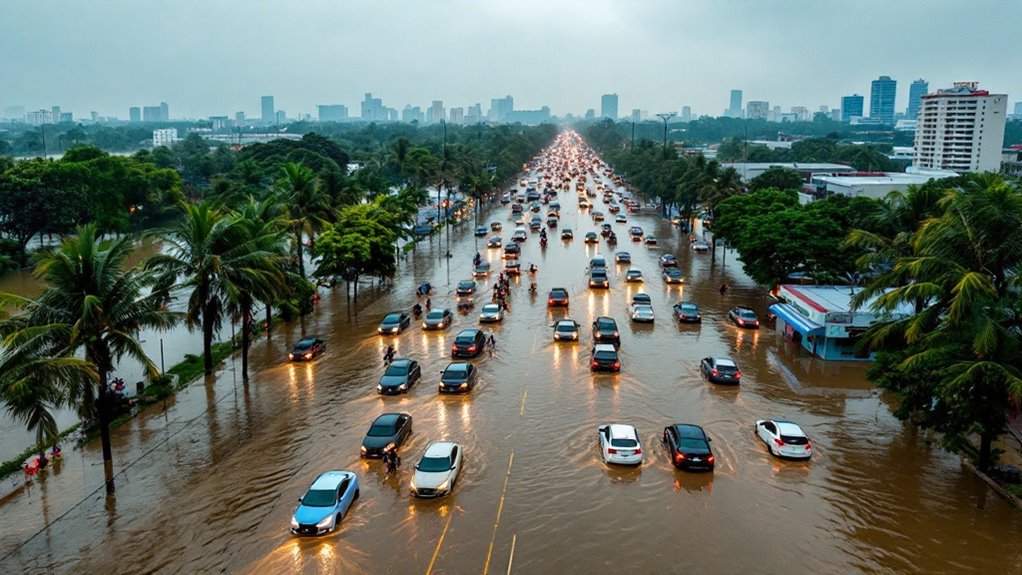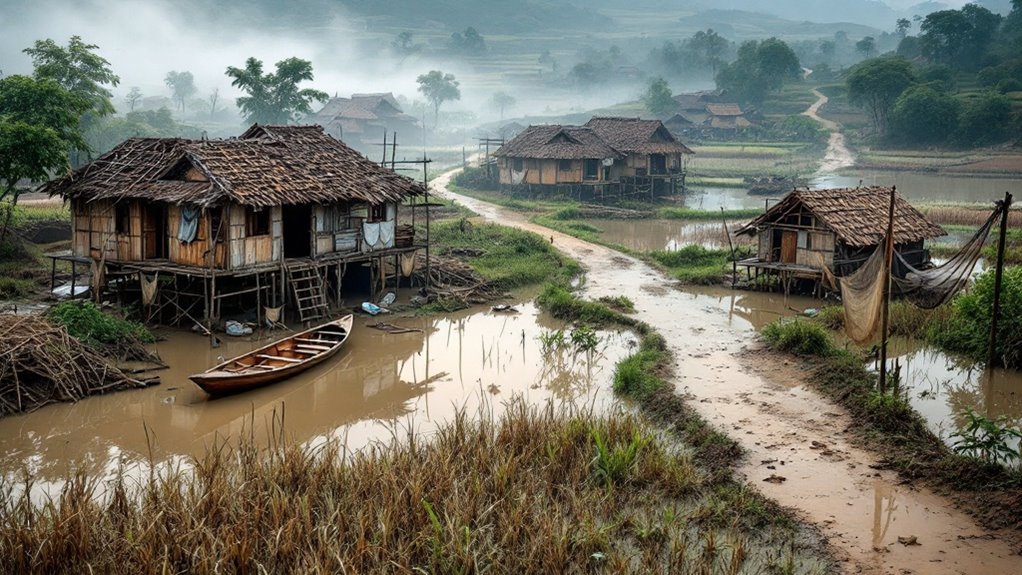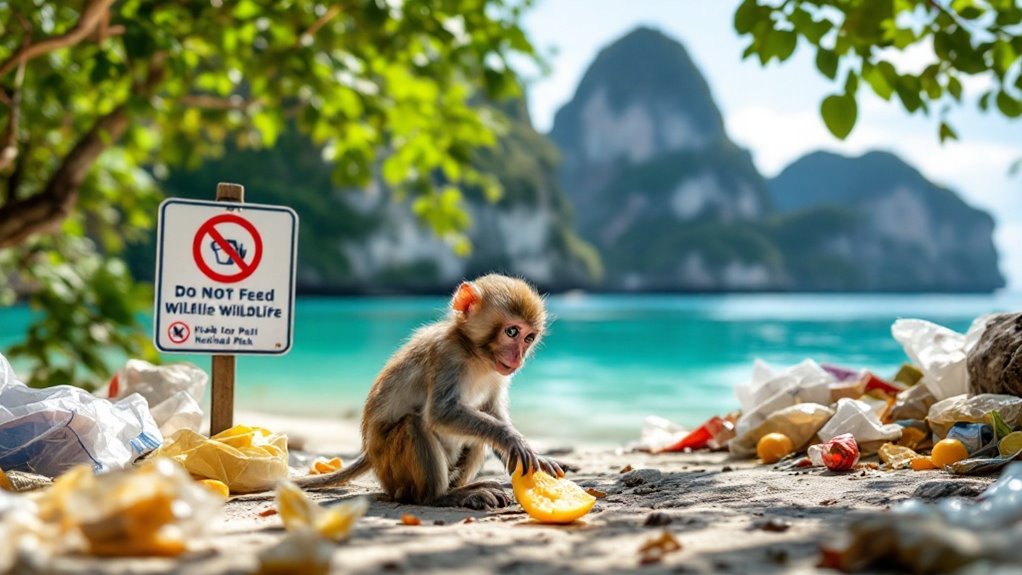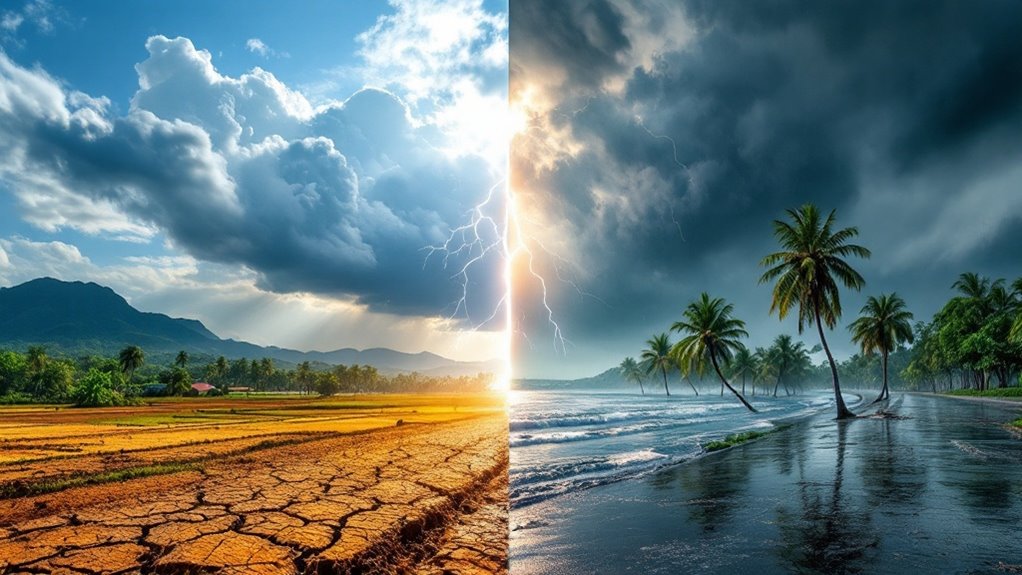Severe flooding in Samut Prakan during April and May resulted in significant gridlock, as torrential rains overwhelmed drainage systems and submerged key roads like Phraeksa, Srinagarindra, and Thepharak under up to 60 centimeters of water. Left lanes and expressway exits were rendered impassable, trapping hundreds of drivers and causing extensive traffic jams that lasted for hours. Repeated storms heightened the crisis, and municipal responses struggled to keep pace. Further details provide insight into the scale and effects of this disruption.
Flooding brought Samut Prakan to a near standstill in early April and again in May, as severe storms caused widespread water accumulation across key roadways and urban districts.
On April 7, a torrential downpour lasting nearly an hour resulted in immediate flooding on major arteries such as Phraeksa Road, Srinagarindra Road, and Thepharak Road. Floodwaters reached depths of up to 60 centimeters in certain low-lying areas, with the left lane of Srinagarindra Road submerged to about 20 centimeters. The stretch from Wat Phraeksa to Rasamee Anant Market became particularly hazardous, leading to traffic stoppages and multiple vehicle breakdowns, especially among motorcycles and compact cars.
A single hour of torrential rain on April 7 flooded major roads, stranding vehicles and bringing Samut Prakan’s traffic to a halt.
The Kanchanaphisek Expressway exit, near the Electricity Authority intersection, saw critical waterlogging, while the Pu Chao Saming Phrai Intersection had turning lanes obstructed, further compounding congestion.
Sukhumvit Road, another primary route, experienced slow-moving traffic as standing water accumulated, and gridlock on April 7-8 extended for kilometers, causing hours-long delays and trapping commuters. Small vehicles were particularly affected by the flooding, with many unable to navigate through deeply submerged sections of Sukhumvit Road. Municipal officers initiated efforts to drain excess water by deploying pumps and clearing debris to help restore road accessibility.
Fresh rainfall in the early hours of May 1 exacerbated pre-existing conditions, overwhelming drainage infrastructure and creating additional bottlenecks, particularly near Rasamee Anant Market and Soi Thetsaban Bang Pu 30.
Authorities responded by deploying water pumps in Mueang district and issuing real-time traffic updates through the Samrong Nuea Traffic Division and local radio stations such as JS100 and FM91 Trafficpro. Despite these efforts, drainage systems proved inadequate, and insurance claims for water-damaged vehicles were expected to surge, especially in zones where water reached car door-height.
Commercial trucks faced significant bottlenecks at key intersections, impacting logistics and resulting in market closures and economic losses.
Residents, some with decades-long experience in the area, reported the flooding as unprecedented in both scale and frequency. Meteorological data indicated the storms were accompanied by temperatures between 26 and 37 degrees Celsius and southwesterly winds of 10-20 km/h.
Ongoing flood events highlighted the need for improved urban drainage, standardized emergency protocols, and greater public awareness regarding flood preparedness in Samut Prakan.









